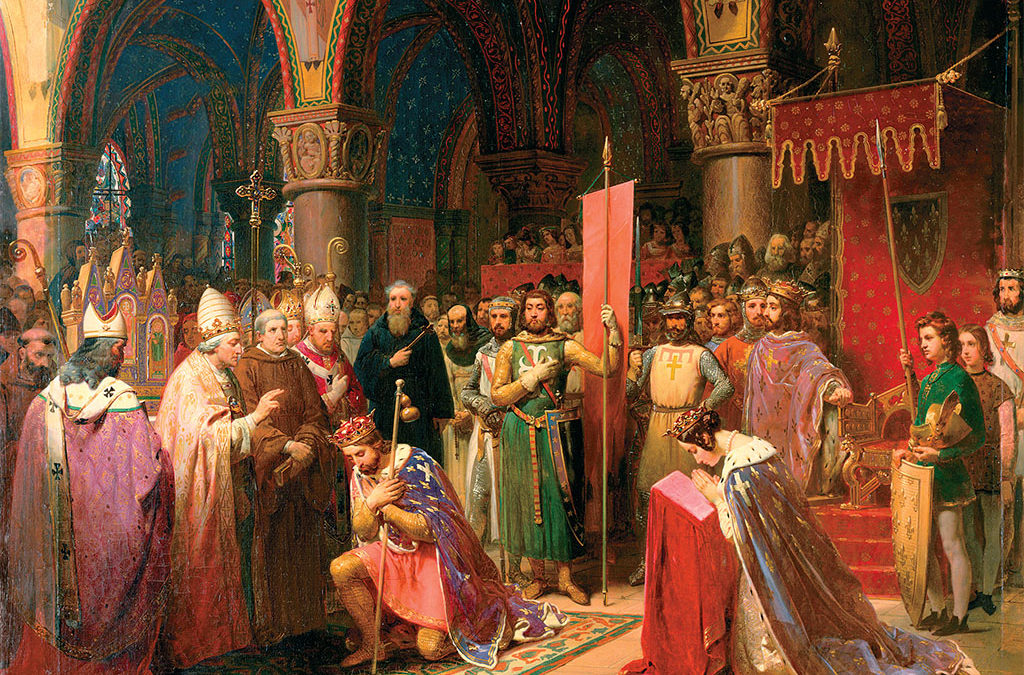Bordeaux was originally known as Burdigala by its original Celtic inhabitants around 300 BC and remained peaceful until 60 BC when the Roman Empire invaded. During the Roman Empire it was a central hub for lead and tin mining, and then shortly became the capital of Roman Aquitaine.
The end of the Roman rule was brought about by multiple sackings from such tribes as the Vandals, Visigoths, and finally, the Franks, which then ensued a period of chaos and plundering. During this time the name evolved from Burdigala to Bordiaus and finally to Bordèu (the Basque word for Bordeaux – which is derived from bord de l’eau: along the water).
It was not until 1152, when Eleanor, Duchess of Aquitaine and ex-wife of King Louis the VII of France, marred Henri Plantagenet. This union marked a turning point for not just the city but also the region, as months later Henri Plantagenet became King Henry II of England, bringing the territory under English rule for the following three centuries.
During this time Bordeaux grew in both size and reputation, primarily due to the ever-growing wine trade that was made possible by the wine-makers being so close to the Garonne River, their primary link to the rest of the world which resulted in such widespread commercial success.
The English rule of Bordeaux came to an end after the Battle of Castillon, during which the English we decisively defeated by the French, marking the end of the Hundred Years War (1337-1453). Bordeaux and its region were once again under French rule, which carried on the ever-expanding wine trade which in the 16th century was coupled with the sugar and slave trade from the West Indies.
It was not until the 18th century that Bordeaux entered its Golden Age with Bordeaux becoming the second largest European port after London. Also during this time, coincidentally the Age of Enlightenment, approximately 5000 buildings were designed and built by architect Victor Louis, including those that expand the riverfront as well as the Grand Theatre (Opera House) raising Bordeaux’s profile to that of the wealthy and bourgeois city.
The French Revolution (1789-1799) gave birth to the Girondins political group, which was a sort of counter-revolutionary party to the Montagnards, a radical group based in Paris. They were tragically defeated and executed by the Montagnards during The Reign of Terror, a dark chapter of France’s history that brought about multiple massacres and public executions. It was not until the end of the Revolution in 1799 and the arrival of Napoleon that The Reign of Terror ended.
In 1814 the Duke of Wellington marched onto Bordeaux. Due to damages made throughout the Spanish Wars Bordeaux was ready to renounce Napoleon and declare loyalty to the Bourbon Monarchy, naming Louis XVIII’s grand-nephew as the Duc de Bordeaux. During this time Bordeaux prospered and evolved (the Pont de Pierre, the first bridge to cross the Garonne river, was built). In 1848, during the Second French Revolution, Bordeaux reluctantly rejoined the republic.
Over the following century, the French government temporarily relocated to Bordeaux in times of war (the Franco-Prussian War, World War I, and World War II, however during the latter it was then relocated again to Vichy). During the Second World War Bordeaux was occupied by the German invaders, yet was a central hub for the Resistance movement. Bordeaux would remain occupied until August 1944.
During the following decades, Bordeaux experienced mass redevelopment under its new Mayor, Jacques Chaban Delmas. More bridges were built to connect the city to the rest of the country and Europe, Universities and hospitals were built. By 1960 Bordeaux has become the capital of the Nouvelle-Aquitaine region, allowing it to prosper economically and industrially.
In 1995 Alain Juppé became Mayor of Bordeaux, and it is largely due to him that Bordeaux has today become such a vibrant and important city. During his tenure, he launched plans to renovate and clean the 18th-century buildings around Bordeaux, introduce a public tram system to minimize excessive traffic in the city, and transform the old town into a pedestrian area.
His leadership and work came through in 2007 when Bordeaux was awarded the status of a UNESCO World Heritage Site for being of outstanding universal value and for its historic role as a place of cultural exchange. Since then it has grown and developed and in 2015 was voted the “Best European Destination” by a landslide. It has become a cultural melting pot that has retained its historical authenticity and is now one of the most visited cities in France.
